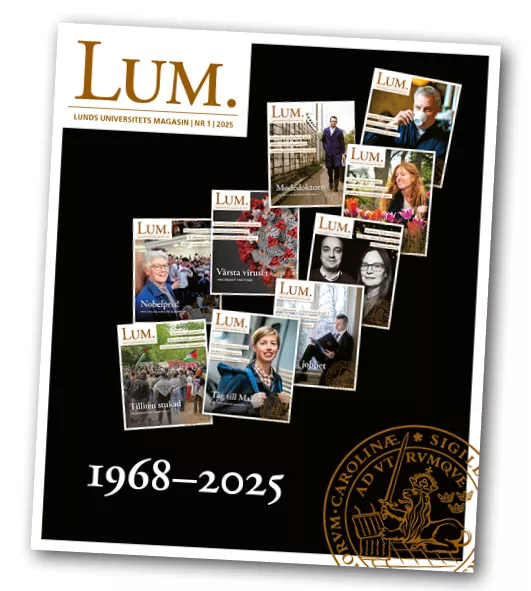If a research field were to be evaluated based on the number of Nobel Prizes it has been awarded, protein research would be in a good position. The fact is proteins perform almost every function in our cells.
“They are central to all living organisms, a perfect combination of form and function. Evolution has had billions of years to ensure that a specific protein can do exactly what is needed when it is needed,” says Derek Logan, professor of molecular biophysics.
A Huge mystery to be solved
Proteins are fantastic at what they do, but they can also cause problems, including disease. This can depend on mutations in the genes that encode proteins. It can also be an issue that the protein behaves as it should, but just too much, as is the case in inflammatory diseases.
“For example, if there is too much inflammation in a tumour, it can cause it to grow even more. A mutation that impacts just one amino acid has the potential to cause serious illness,” says Ulf Nilsson, professor of chemistry.
Considering that humans have roughly 21,000 genes that together can express more than 90,000 different protein variants, it is clear that this is a big mystery to solve.
From hours to seconds
Fortunately, today’s tools for understanding this protein puzzle have made great strides. Technology exists that can map the structures of the body’s proteins to an extremely high resolution. Using modern instruments such as MAX IV and electron microscopes, researchers can see what proteins look like to the tenth of a nanometre precision.
“This is tiny. By looking at its structure, we can understand how a protein works. I might have thought that a protein does a certain thing and then we see that it connects with other proteins and builds a new structure,” says Karin Lindkvist, professor of cell biology with a focus on medical structural biology.
No that long ago, it was much more complicated.
“When I was a doctoral student, I spent 12 hours collecting data that today takes me 15 seconds. So, progress is happening fast,” says Karin Lindkvist.
Inspired by Anders Liljas
Many researchers have been inspired by Lund professor and doyen Anders Liljas, who in the early 1970s determined the structure of the world’s fastest enzyme, carbonic anhydrase.
“Back then, he had a gigantic room with a ladder which he used to switch on atoms here and there on his models. What attracted me to the field was how visual the structure of proteins is,” says Karin Lindkvist.
Nowadays, the same can be achieved with a normal laptop.
Whereas Karin Lindkvist and Derek Logan fell partly for the aesthetic qualities of protein structure, Ulf Nilsson was attracted by the opportunity to influence biology through protein research.
“I wanted to disrupt them, stimulate them. I wanted to pick at them. One way to influence processes in the body is by producing molecules. Once you can determine the structure of a protein and see it in 3D, you can make more informed guesses about how chemistry or molecules might affect the protein, which is what medicines do,” says Ulf Nilsson.
More effective drugs
Knowledge about protein structure is important, not least because it can lead to more effective drug treatments. These are known as target proteins, which are proteins that can be targeted for disease treatment, often using small artificial molecules that inhibit their function. Ulf Nilsson currently has these kinds of molecules in four different clinical trials, ranging from inflammatory processes in the body to cancer.
“The development of drugs has changed since the turn of the century. In the 1900s, attention was on disease in animals. Now, we and the pharmaceutical companies are more focused on proteins and their structure. We use the proteins as our starting point, what is good or what has gone wrong in a certain protein. The hope is that we can find ways to cure disease with new and better treatments,” says Ulf Nilsson.



